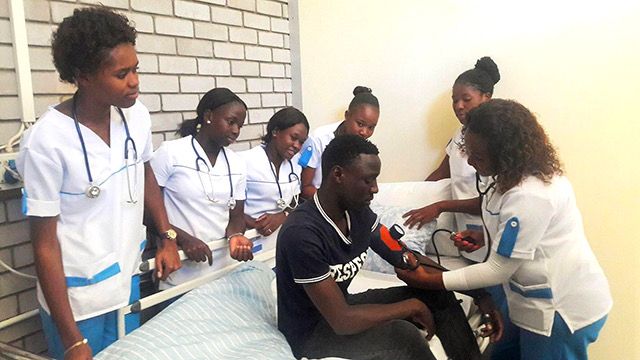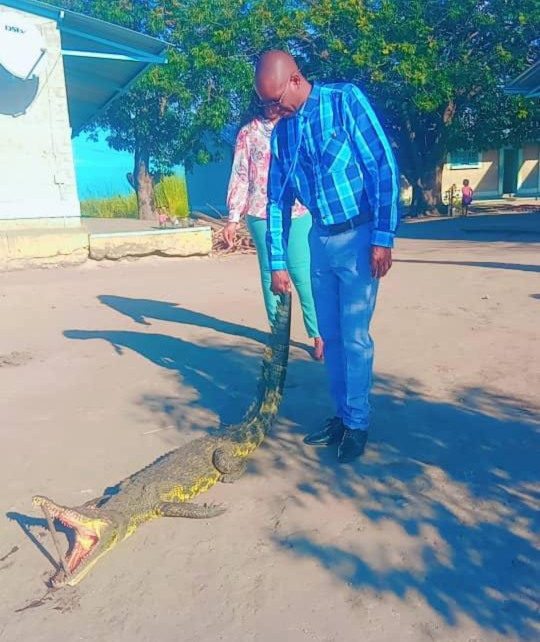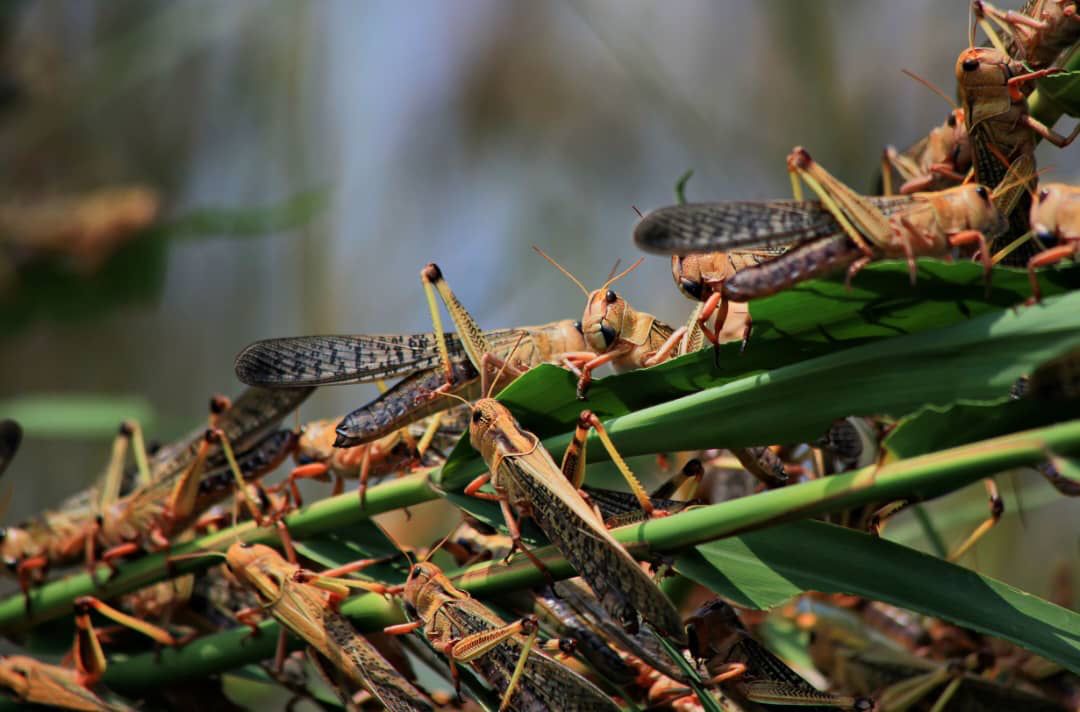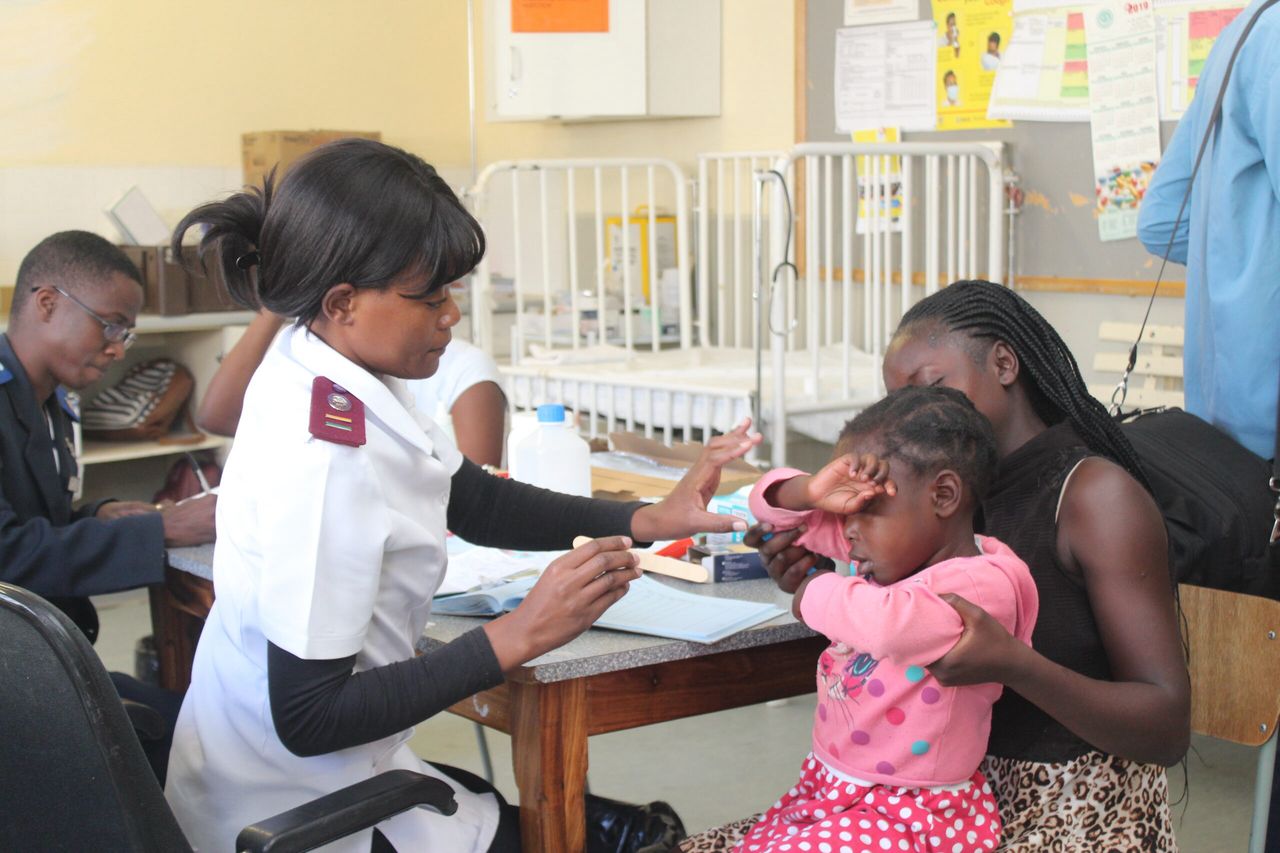To mark the 25th anniversary of the Save the Rhino Trust, an intrepid group of environmentalists is making a 360-kilometre sponsored hike through southern Kunene (Damaraland) to raise funds and in memory of Blythe Loutit, co-founder of the project to protect the black rhino in the area.
Blythe died of cancer in June 2004. Among the tributes she received for her work are the IUCN Species Survival Commission’s Peter Scott Merit Award in 1986, in 1992 she won the Survival Award for the Conservation of an Endangered Species and in recently in 2001 the BBC’s Animal Award for the Conservation of a Species.To share the special event, the hikers have been sending out a daily diary of their progress.WE started walking at 06h30 towards Erb Wasser, which we reached at 08h30.A fresh rhino spoor going southwest from the water was seen, but since it was not our general direction, we gave the animal a miss.By the size of the hind spoor it could have been the young male called Abel and about nine years old.At the main spring we set up a ‘stealth camera’ which will be checked in about four weeks’ time.By 09h30 we had already covered 10 km with a 30-minute break in between.At 12h00 we had reached the Dorros River/Goantagab River confluence for a lunch break.Here we again discovered fresh rhino tracks which we followed for two hours until we reached our overnight spot at 16h00.Unfortunately the animal was not found, possibly Karli, and we know him as a rhino that covers long distances during the day.Great was the excitement when the tracks of a female with a young calf, approx five to six months old, were also found.When starting in the Ugab the Etrex GPS Odometer was on 1 196 km and when we stopped at the overnight camp it showed 1 224 km – the distance covered was 28 km in total.A few shortcuts were taken to make walking easier for the first day.Everybody was in good spirits and getting ready for the next stage.Thursday August 30 Sebulon and myself were woken at about 02h00 in the morning by both dogs staring down the narrow Dorros River where we were sleeping.After our eyes had adjusted, the moon was also quite bright; we realised we were being watched by an adult rhino.He kept milling around close to the camp for a while, before signalling his retreat with a typical rhino snort.After the wake-up call we measured the tracks and agreed it was Karli (hind spoor 19 cm width) – the dominant bull in the area.(After Karli had left his mother, he once spent a whole night around Blythe’s Land Rover in which she was sleeping, nudging it and giving the typical plaintive call of a baby rhino).Friday August 31 At 06h40 we started off having no points to orientate us by, just using the road as a direction indicator.Visibility was only about 100 metres.Game seen along the way were a couple of oryx with their offspring, all of them still brown in colour and not older than a month.Three bat-eared foxes were also spotted.As we reached the Huab River the mist started lifting and the amazing mountain ranges north of the Huab became visible.A few oryx were grazing at the edge of the river.Just before we entered the river we found two fresh tracks of desert elephant moving in an easterly direction.Moving very carefully through the small dunes that had formed around the saltbushes (Salsola species) on the banks of the river we tried to get them visual, unfortunately without any success.Total walked for the day was 16 km, doing approx.5 km/h.Friday September 1 Still going strong, though today was the most exhausting of the last four days.After breakfast we set off, leaving camp at 06h00 in a north-easterly direction.We followed a big tributary to the Huab River for about three hours until we reached the watershed.Near the spring Uwibib we again found a fresh rhino track, unfortunately again going into the wrong direction.A few oryx and kudu were seen as well as a scrub hare that was chased up by dogs Tsotsi and Shamira.We continued our walk along the northern banks of the Springbok River, having a careful lookout for elephants and rhino.Plenty of spoor was seen coming and going from Driefontein Waterhole (a natural spring).Everybody cooled off by washing their faces, having a drink and dunking their hats in the crystal clear water.By now we all were really tired, feet, backs and legs hurting, but still in good spirits, hoping to see a rhino or elephant.Camp was reached at 16h45 and everybody settled down.Around the fire Joe told us that we had actually rested up and had lunch at the same spot where he and Blythe met by chance in 1989, when he and a couple of friends were busy with a 200 km fundraising walk for SRT.Saturday September 2 Everybody was very excited about the possibility of seeing rhino today, a lot of spoor was seen around the water the previous day and we received reports that three animals with calves had been seen the previous days in the area.Approximately 30 minutes after leaving camp a single animal was spotted in the mountains.The general direction was changed and we approached the rhino.The wind was to our advantage, blowing strongly from a southeasterly direction.We were able to approach to within 68 m of the animal (range finder was used).Sebulon filled in the standard Rhino ID form, recording ear notches, horn shapes, co-ordinates where animal was found distance to animal and a few more items while observing the rhino.Bernd completed the HID (Human Induced Disturbance) form, which is part of present research conducted on rhino behaviour by Round River Conservation Studies – the end result being a National Rhino Observation Protocol as requested by the Ministry of Environment and Tourism.After spending about 40 minutes with the rhino, a young female about seven to eight years old, we continued with our journey.A total of 25 km was covered over extremely rocky terrain.Sunday September 3 What an exciting day! Wake-up call at 04h30; started walking at 06h05.Within 25 minutes of walking we spotted a female rhino and calf.We changed our general direction and walked up to them, placing ourselves downwind from the two animals feeding on an euphorbia damarana.We completed all the SRT paperwork and enjoyed the sighting.Without disturbing Tina and Teunis we moved on after 30 minutes of observation.Teunis (two to three years old according to the database) is her previous calf; sadly she lost her recent calf, possibly to spotted hyena or lion.After lunch we were lucky to spot both Diana and Debbie feeding peacefully in the thick Salavadoras.Diana’s is not in good condition – she has to nurse a calf, is more than 30 years old and it did not rain well during the last rainy season.After meeting up with our backup team we had a look at some rock engravings near a spring and continued with our walk.Along the way we were lucky enough to see five elephants.They had been to the spring and were moving around some mopane thickets and feeding.Various other species of game were also spotted: oryx, Hartmann’s mountain zebra, kudu and steenbok.From time to time we also had a look at animal tracks along the way: cheetah, honey badger and leopard.After completing 32 km we set up our camp in the lower Achab River.Total to date: 163 km.Among the tributes she received for her work are the IUCN Species Survival Commission’s Peter Scott Merit Award in 1986, in 1992 she won the Survival Award for the Conservation of an Endangered Species and in recently in 2001 the BBC’s Animal Award for the Conservation of a Species.To share the special event, the hikers have been sending out a daily diary of their progress.WE started walking at 06h30 towards Erb Wasser, which we reached at 08h30.A fresh rhino spoor going southwest from the water was seen, but since it was not our general direction, we gave the animal a miss.By the size of the hind spoor it could have been the young male called Abel and about nine years old.At the main spring we set up a ‘stealth camera’ which will be checked in about four weeks’ time.By 09h30 we had already covered 10 km with a 30-minute break in between.At 12h00 we had reached the Dorros River/Goantagab River confluence for a lunch break.Here we again discovered fresh rhino tracks which we followed for two hours until we reached our overnight spot at 16h00.Unfortunately the animal was not found, possibly Karli, and we know him as a rhino that covers long distances during the day.Great was the excitement when the tracks of a female with a young calf, approx five to six months old, were also found.When starting in the Ugab the Etrex GPS Odometer was on 1 196 km and when we stopped at the overnight camp it showed 1 224 km – the distance covered was 28 km in total.A few shortcuts were taken to make walking easier for the first day.Everybody was in good spirits and getting ready for the next stage.Thursday August 30 Sebulon and myself were woken at about 02h00 in the morning by both dogs staring down the narrow Dorros River where we were sleeping.After our eyes had adjusted, the moon was also quite bright; we realised we were being watched by an adult rhino.He kept milling around close to the camp for a while, before signalling his retreat with a typical rhino snort.After the wake-up call we measured the tracks and agreed it was Karli (hind spoor 19 cm width) – the dominant bull in the area.(After Karli had left his mother, he once spent a whole night around Blythe’s Land Rover in which she was sleeping, nudging it and giving the typical plaintive call of a baby rhino).Friday August 31 At 06h40 we started off having no points to orientate us by, just using the road as a direction indicator.Visibility was only about 100 metres.Game seen along the way were a couple of oryx with their offspring, all of them still brown in colour and not older than a month.Three bat-eared foxes were also spotted. As we reached the Huab River the mist started lifting and the amazing mountain ranges north of the Huab became visible.A few oryx were grazing at the edge of the river.Just before we entered the river we found two fresh tracks of desert elephant moving in an easterly direction.Moving very carefully through the small dunes that had formed around the saltbushes (Salsola species) on the banks of the river we tried to get them visual, unfortunately without any success.Total walked for the day was 16 km, doing approx.5 km/h.Friday September 1 Still going strong, though today was the most exhausting of the last four days.After breakfast we set off, leaving camp at 06h00 in a north-easterly direction.We followed a big tributary to the Huab River for about three hours until we reached the watershed.Near the spring Uwibib we again found a fresh rhino track, unfortunately again going into the wrong direction.A few oryx and kudu were seen as well as a scrub hare that was chased up by dogs Tsotsi and Shamira.We continued our walk along the northern banks of the Springbok River, having a careful lookout for elephants and rhino.Plenty of spoor was seen coming and going from Driefontein Waterhole (a natural spring).Everybody cooled off by washing their faces, having a drink and dunking their hats in the crystal clear water.By now we all were really tired, feet, backs and legs hurting, but still in good spirits, hoping to see a rhino or elephant.Camp was reached at 16h45 and everybody settled down.Around the fire Joe told us that we had actually rested up and had lunch at the same spot where he and Blythe met by chance in 1989, when he and a couple of friends were busy with a 200 km fundraising walk for SRT.Saturday September 2 Everybody was very excited about the possibility of seeing rhino today, a lot of spoor was seen around the water the previous day and we received reports that three animals with calves had been seen the previous days in the area.Approximately 30 minutes after leaving camp a single animal was spotted in the mountains.The general direction was changed and we approached the rhino.The wind was to our advantage, blowing strongly from a southeasterly direction.We were able to approach to within 68 m of the animal (range finder was used).Sebulon filled in the standard Rhino ID form, recording ear notches, horn shapes, co-ordinates where animal was found distance to animal and a few more items while observing the rhino.Bernd completed the HID (Human Induced Disturbance) form, which is part of present research conducted on rhino behaviour by Round River Conservation Studies – the end result being a National Rhino Observation Protocol as requested by the Ministry of Environment and Tourism.After spending about 40 minutes with the rhino, a young female about seven to eight years old, we continued with our journey.A total of 25 km was covered over extremely rocky terrain. Sunday September 3 What an exciting day! Wake-up call at 04h30; started walking at 06h05.Within 25 minutes of walking we spotted a female rhino and calf.We changed our general direction and walked up to them, placing ourselves downwind from the two animals feeding on an euphorbia damarana.We completed all the SRT paperwork and enjoyed the sighting.Without disturbing Tina and Teunis we moved on after 30 minutes of observation.Teunis (two to three years old according to the database) is her previous calf; sadly she lost her recent calf, possibly to spotted hyena or lion.After lunch we were lucky to spot both Diana and Debbie feeding peacefully in the thick Salavadoras.Diana’s is not in good condition – she has to nurse a calf, is more than 30 years old and it did not rain well during the last rainy season.After meeting up with our backup team we had a look at some rock engravings near a spring and continued with our walk.Along the way we were lucky enough to see five elephants.They had been to the spring and were moving around some mopane thickets and feeding.Various other species of game were also spotted: oryx, Hartmann’s mountain zebra, kudu and steenbok.From time to time we also had a look at animal tracks along the way: cheetah, honey badger and leopard.After completing 32 km we set up our camp in the lower Achab River.Total to date: 163 km.
Stay informed with The Namibian – your source for credible journalism. Get in-depth reporting and opinions for
only N$85 a month. Invest in journalism, invest in democracy –
Subscribe Now!










